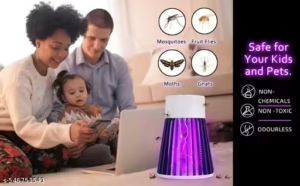
Before It Began Making Use of Artificial Intelligence Applications, Jefferson Einstein, Part of the jefferson health system, faceed a Growing Challenge in Managing Account Pulmonary Embolism Cases.
Please Unblock add blocker
The challenge
Rising imaging Volumes and Manual Workflows – Issues Common Across Many Health Systems – Limited the Speed and Efficiency of Identify and Triaging Pe Cases, Especially with Was Critical.
Traditional processes often struggled to keep pace with increasing imaging demands, which spanned Multiple disciplines and modalities. Staff recognized ai had the potential to bridge the gaps in these workflows, ultimately helping achieve the goal of delivering the highest standard of patient care.
Proposal
“At Jefferson Einstein, our culture of innovation and commission to stand ‘on the bleeding edge’ of advancements Drove us to explore how ai group revision has been given pered pered pered Diagnostic Accuracy and Improving Patient Care, “said Dr. Avi Sharma, Director and Associate Chair of Ai at Jeferson Einstein.
Technology from Health it vendor aidoc emerged as the ideal to address this critical need, he said.
“As global partners of arc – The center for digital innovation at Sheeba Medical Center – And early adopters of ai in radiology, we had alredy implemented Aidoc’s Platform for Diagnostic Radiology Systems, “He Continued. Optimize our Pulmonary Embolism Response Team (Pert) Workflows.
“The vendor’s ai flags suspected pes in real time, creating a proactive process by automatically identifying potential cases and notification the pert through a mobile application,” Hey added. “This capability enabled timely treatment and rapid mobileization of the multidisciplinary pert for urgent interventions.”
Additionally, Aidoc’s Technology Seamlessly Integrated Into Existing Systems, Including Fuji Synapse Pacs and Cerner Ehr, ENONMAL DISRUPTION to Workflows, Empowering Both Diagnostic radiologists and interventional radiologists to work more efficiently, sharma noted.
“Choosing a consistent, adaptable partner was key, and over the year, we’ve grown along with aidoc, deplying more systems to further enhance patients,” He said.
Meeting the challenge
Implementing the ai technology revolutionized How Jefferson Einstein Manages Pe Cases. The pert now receives notifications through mobile alerts, allowing interventional radiologists to assess patient imaging and lab results from anything and at any time. Real-time updates ensure seamless collaboration across departments, significantly Reducing delays.
“The AI triggers a streamlined process: it alerts interventional radiologists, who then mobiles will result Resources to TRIAGE Qualified Patients to the Operating Room,” Sharma exped. “This has reduced treatment time and bolsred clinicians’ Confidence by Improving Communication and Decision-Making.
“We also incorporated AI Into Our Educational Efforts,” He Added. “For example, radiology residence are trained on the system during orientation, fostering early familyia with these tools.”
Results
Hard Results to Date Can Be Broken Down Into Three Major Areas. First, an increase in clinically approves interventions.
Pert intervention rates have increased by 73.8%, Rising from 0.84% (17 interventions/2,022 ctpas) Pre-I to 1.46% (32 interventions/2,191 ctpas). A CTPA is a computeed Tomography Pulmonary Angiography.
“This demonstrates the power of ai in efficiently triaging critical cases and ensuring high-Risk pe patients receive timely care,” Sharma explained. “In real terms, this means faster, more precise responses when every minute matters.”
Second, a reduction in time to treatment.
“In a recent study, accepted to sir 2025, we evaluated the impact of the system on Reducing Exam-to-Needle Time for Patients with Acute Pulmonary Embolism Undergoing Percutaneous Thombectaneous Thombectomy,” Sharma explained. “The study found that implementing the alert significantly reduced overall exam-to-needle time by 20%-148 minutes to 119 minutes.
“The alert system improved interdisciplinary collaboration among radiology, emergency and critical care teams, Enhancing Timely Care,” He Continued. “For Patients, these minutes can mean the difference between life and long-term complications.”
And Third, Increased Efficiency in radiology workflows.
“Our radiology department has Seen Measurable Gains In Critical Result Communication Turnaround Times, “He noted. This has created a positive feedback loop, as success stories encourage more of our team to embrace ai in their workflows.
“This Approach Involves Analyzing Pre- And Post-II implementation data, Presenting Findings at Staff Meetings, Encouring peer-to-peer decisions about ai benefits, and tailored educational Approacheses,” Added.
Advice for other
Sharma said if his peers at other hospitals and health systems are considering ai, they should judge jump right in.
“The best time to start using ai was Yesterday,” He Quipped. “Focus on identifying the pain points in your workflows and select ai systems that integrate seamlessly with your existing systems, such as pacs and ehr platforms.
“Building a Culture of Trust and Curiosity is Critical,” He Continued. “Engage Early Adopters who are eager to explore new technologies and encourage them to share their success stories. Use data to demonstrate measurable utcomes and share them widely withthi your organization. Colleagues see proof of the tool’s impact, they’ll be far more likely to give it a try. “
Ongoing education also is essential, essentially for radiologists in training who will shape the future of ai-enabled healthcare, he added.
“Finally, Remember that ai is a long-term investment in patient,” He concluded. “It’s not just about roi. It’s about Raising the standard of care across the board. AI offers a safety network
Follow Bill’s Hit Coverage on LinkedIn: Bill Siwicki
Email him: bsiwicki@himss.org
Healthcare it news is a Himss Media Publication.
Watch now: Why you can’t just dump ai on a cio or cto to make a chief ai officer


